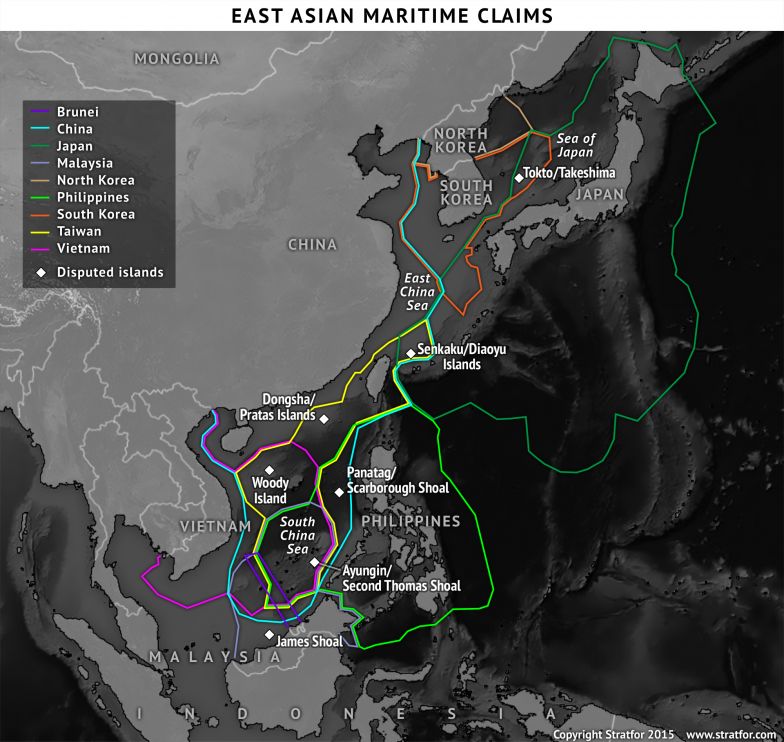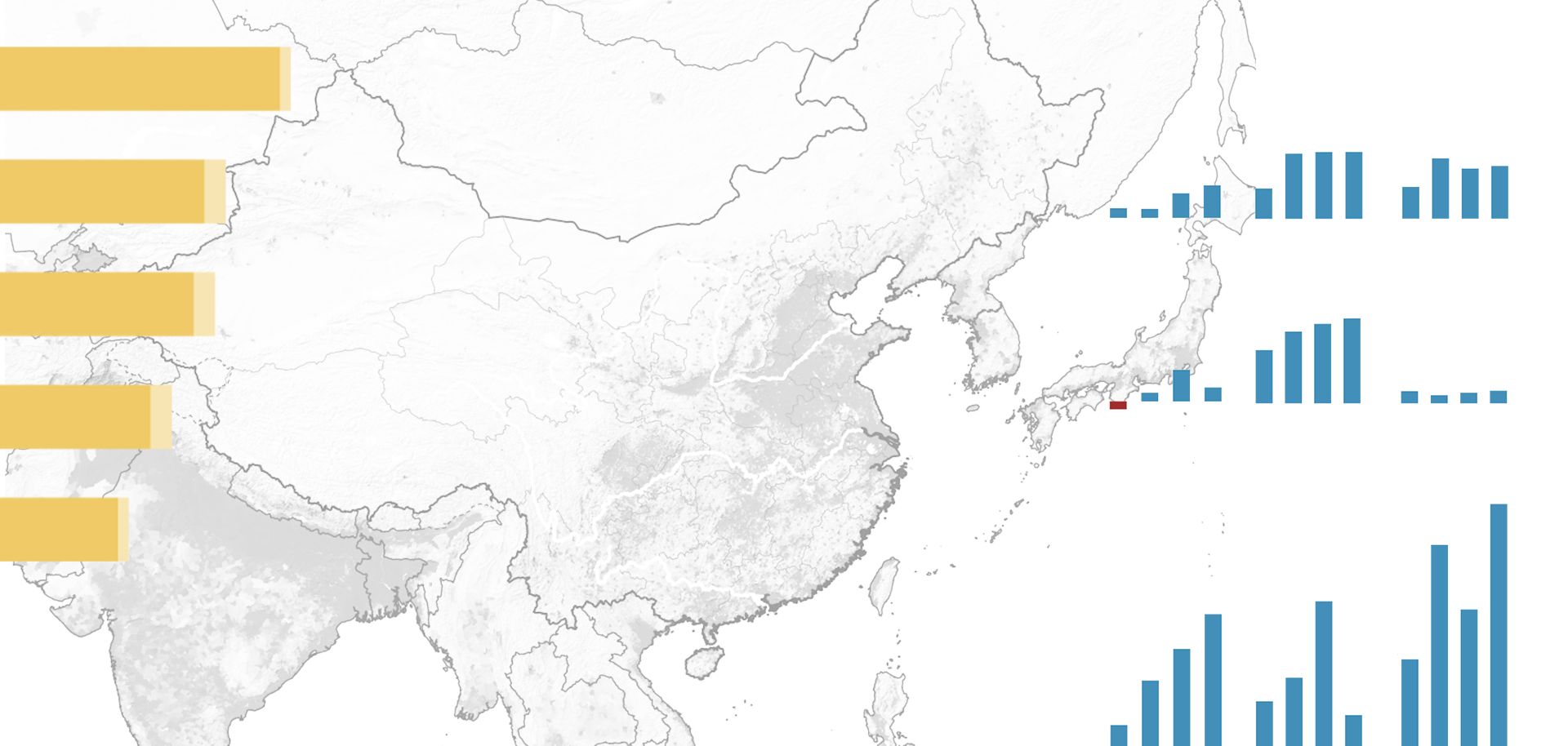
For months, Beijing and Washington have been engaged in a mounting rhetorical war over Chinese territorial claims — and island building — in contested waters of the South China Sea. The Chinese Foreign Ministry has cautioned the U.S. military not to exacerbate tension in the South China Sea by sailing naval vessels or flying aircraft near Chinese-held islands, many of which are located in waters also claimed by Vietnam, the Philippines and Malaysia. The Pentagon has countered that U.S. ships and aircraft will travel along any routes allowed by international law at any time and has told regional allies that it will soon conduct patrols near Chinese positions.
Though this standoff might seem like simple nationalist posturing between two Pacific powers, maritime disputes carry a special significance in Asia. Unlike in Europe, water is the organizing element of the continent, which wraps around the East and South China Seas, the Bay of Bengal and Indian Ocean, as well as countless peripheral lagoons and bays. Ownership of a particular island, reef or rock, and the right to name a body of water is more than a question of sentimentality — it is the foundation of many national policy strategies. Securing the right to patrol, build bases and regulate trade through these waterways can mean access to resources critical to sustaining economic growth and political stability.
Beijing's and Washington's divergent perspectives are rooted in radically different national and regional strategies. On the world stage, China portrays the South China Sea dispute as fundamentally a question of sovereignty. The United States, however, foregrounds concerns about freedom of navigation. Since the end of the Cold War, the United States has been the unquestioned pre-eminent power in the Pacific Rim, assisted by its allies, most notably Japan and South Korea. Simultaneously, however, China has been emerging as a potential regional hegemon, and the South China Sea has become the most visible area of tension.



